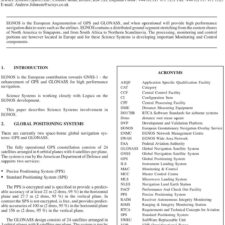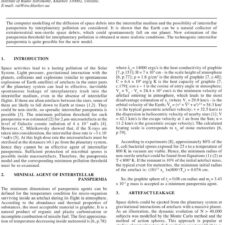The Ultimate Destination: Choice of Interplanetary Exploration Path can define Future of Interstellar Spaceflight
£5.00
D. V. Silin (2013), JBIS, 66, 5-10
Refcode: 2013.66.5
Abstract:
Manned interstellar spaceflight is facing multiple challenges of great magnitude; among them are extremely large distances and the lack of known habitable planets other than Earth. Many of these challenges are applicable to manned space exploration within the Solar System to the same or lesser degree. If these issues are resolved on an interplanetary scale, better position to pursue interstellar exploration can be reached. However, very little progress (if any) was achieved in manned space exploration since the end of Space Race. There is no lack of proposed missions, but all of them require considerable technological and financial efforts to implement while yielding no tangible benefits that would justify their costs. To overcome this obstacle highest priority in future space exploration plans should be assigned to the creation of added value in outer space. This goal can be reached if reductions in space transportation, construction and maintenance of space-based structures costs are achieved. In order to achieve these requirements several key technologies have to be mastered, such as near-Earth object mining, space- based manufacturing, agriculture and structure assembly. To keep cost and difficulty under control next exploration steps can be limited to nearby destinations such as geostationary orbit, low lunar orbit, Moon surface and Sun-Earth L1 vicinity. Completion of such a program will create a solid foundation for further exploration and colonization of the Solar System, solve common challenges of interplanetary and interstellar spaceflight and create useful results for the majority of human population. Another important result is that perception of suitable destinations for interstellar missions will change significantly. If it becomes possible to create habitable and self-sufficient artificial environments in the nearby interplanetary space, Earth-like habitable planets will be no longer required to expand beyond our Solar System. Large fraction of the stars in the observable Universe will become valid targets for interstellar missions.





